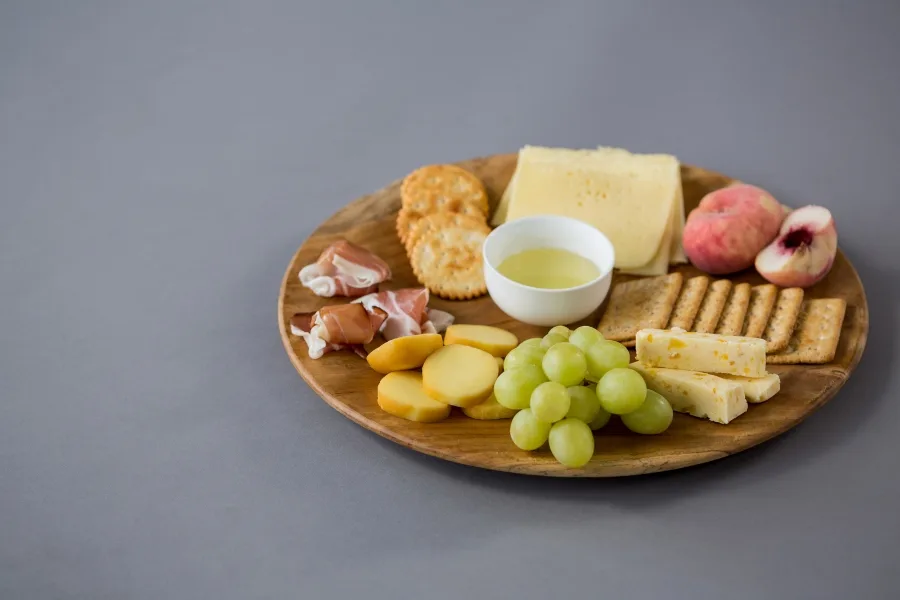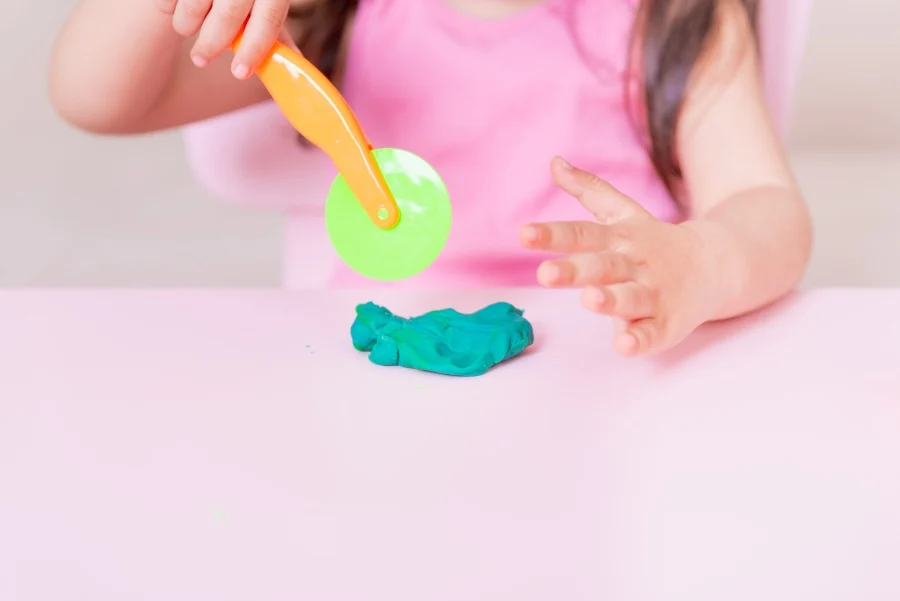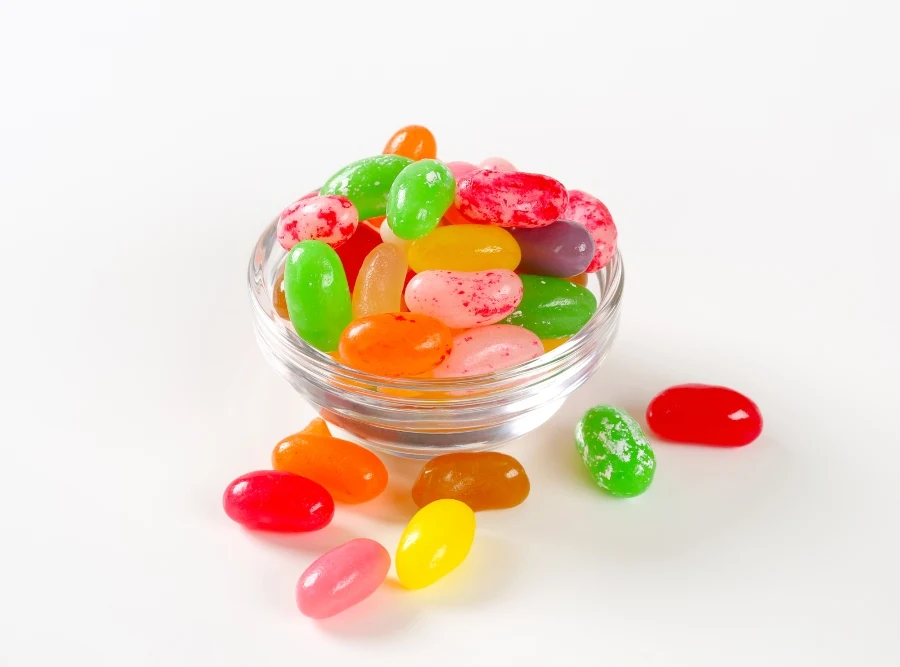Whether you are wanting to explore the senses as part of a preschool theme or just to have some fun sensory play, these sense-of-taste activities are unique and fun.
You can investigate the senses with children through planned activities but it also happens naturally as they play.
Try these 15 yummy tasting activities with your preschoolers!
1. Cook Together
For a meal or snack, plan to cook or make something where children can take part in the activity.

Give them chances to smell, spoon, stir, slice, pour and spread. When the food is ready, taste it together, talking about the results: sweet, salty, sour, bitter and even umami.
Kids sometimes say that a certain food tastes “plain” or they mention textures, like “crunchy” or “mushy”, which is an important part of the eating experience.
Here are some simple cooking activities for kids.
2. Taste Testing
Set up a fun taste-testing sensory station. Children wear blindfolds or close their eyes while you offer them small samples of foods to taste and guess.
You can do this related to a theme, such as fruits, vegetables and snacks. For younger children, you could show them the foods first and then have them guess the taste samples without looking.
Keeping their eyes closed can be a challenge, but some kids don’t like wearing blindfolds or scarves over their eyes.
3. Edible Finger Painting
Offer kids pudding, flavoured yoghurt or smooth baby food to finger paint with washed hands on a clean table or tray.
They can taste the “paints” as they work and talk about the flavours they experience.
4. Tasting Party
Set out trays or plates of bite-sized food samples for children to try. Talk about the various options ahead of time, including details about food groups.

As the kids try the different foods, ask them questions about how they taste, reaching beyond whether or not they “like” them.
5. “Tony Baroni” Feast
Share the fun rhyming book by Marilyn Sadler called Tony Baroni Loves Macaroni.
Afterwards, you could offer various types of cooked pasta for kids to try. Children could also help you make AND taste one of the meals shown in the story.
6. Edible Playdough or Slime
You can find recipes online for many different types of edible playdough flavoured with items such as peanut butter, applesauce, marshmallows and soft drink mixes.
Find the one you think your kids would enjoy the most and have them help mix the concoction. As they manipulate and sample the playdough, urge them to talk about how it tastes.

Here’s a recipe for edible peanut butter playdough.
7. Build with Pretzels and Marshmallows
Offer marshmallows in a variety of sizes and colours, along with small pretzel sticks. Children stick the pretzels into the marshmallows to connect and build.
When the engineering part of the activity is completed, they can taste test the materials!
8. Jelly Bean Tasting
One flavour at a time, offer kids a variety of jelly beans, asking them to guess the tastes.

Make a large chart, showing the colours of the beans and the guesses. Talk about the results and correct answers. Have children vote for their favourites.
9. Very Hungry Caterpillars
Share Eric Carle’s book The Very Hungry Caterpillar.
Then, pretending they are also “hungry caterpillars,” children taste sample the very same food items found in the book:
- Apples
- Pears
- Plums
- Strawberries
- Oranges
- Chocolate cake
- Ice cream in cones
- Pickles
- Swiss cheese
- Salami
- Lollipops
- Cherry pie
- Sausages
- Cupcakes
- Watermelon
- Green leaves (lettuce or spinach)
10. Comparing Sugar and Salt
On dark-coloured surfaces or plates, offer each child a small amount of sugar and salt, side by side.
Talk about how they look, smell and feel: what is the same and what is different? To taste, kids can lick a finger and press onto the sugar and salt, one at a time.

Talk about sweet and salty. Ask what kinds of foods they eat that are sweet or salty. What are their favourites?
11. Yummy Things to Eat
Discuss how some things are not meant to be eaten, taste bad, or could even make us sick.
Share the humourous picture book on this topic called Yummy Yucky by Leslie Patricelli.
This could also lead to a discussion of “picky eaters.” Even though many foods are good for us, we sometimes don’t like the way they taste or feel in our mouths.
12. Mac and Cheese Competition
Many kids like macaroni and cheese. Give them a chance to choose their favourite brand or style (including homemade) by making several different types for a side-by-side comparison.
For kids who don’t eat dairy, offer several different brands or recipes made with plant-based cheese products.
13. Tasting Memories
Like smells, different tastes can bring back strong memories.
While taking part in any of the tasting activities, start a discussion about any memories these tastes bring to mind: Grandma’s house, a trip to the beach, or maybe a birthday party.
14. Using All the Senses
During tasting activities, snacks or meals, stress the idea that eating isn’t just about taste.
While eating, encourage children to talk about the colours, the smells of the foods, the feel of the textures and sometimes even hearing the sounds, such as “crunch!”
15. Fruit Exploration
Various parts or formats of fruits often taste different.
Offer children a selection of fruits to taste: as a whole to bite into, as slices or chunks, and also samples of the skin, alone.
When possible, have canned versions and dried versions of the same fruits to taste and compare.
For example, kids bite into a whole apple, sample slices or chunks of the apple, try some of the peel on its own, and also taste dried and canned apples. What are their observations?
For various sensory reasons, some kids have a great deal of difficulty trying new tastes and textures. Make these opportunities available to them but avoid pushing beyond their comfort zones.
In classroom settings, double-check with parents about any food allergies before offering more unusual snacks to sample.
Explore more senses with these ideas:
- Sense of hearing activities
- Sense of smell activities
- Sense of touch activities
- Sense of sight activities
- Balance (vestibular activities)
- Body awareness (proprioception input)

